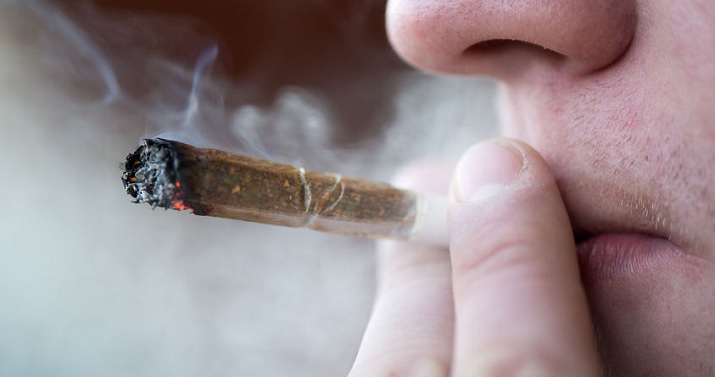
Have you ever caught yourself wondering, “At what point did people figure out that cannabis was a thing
you could harvest, light up and smoke?” It’s a fair question. How and why would that first time ever happen
in our history?
To answer the question is tricky. Maybe even un-know-able, despite what we hear from Joe Rogan.
However, I too have a barroom guess derived from curiosity and studies by people smarter than me.
People have always “played with their food.” We can see it in the tablet engravings of mankind’s first civilizations, documenting how to identify plants, grow plants, use plants as weapons, and countless other uses. To no surprise, plants were mainly used for food. Yet, in these ancient records, food value translated to strength (being full or whole), and strength translated to health. Fun fact, the lineage of today’s word for health literally translates back to the original word for wholeness—the opposite of “missing something.”
The same logic of finding wholeness from plants was eventually applied to the sick and dying. They were
“missing something” in their strength. Ancient civilizations began discovering that certain plants held
specific values for bringing health to individuals in need.
Proof of this is seen as far back as 60,000 BCE, in prehistoric gravesites where bundles of herbal plants were found collected near bodies—suggesting its use as a comfort-aid to those about to pass away. The type, preparation and use of these plant medicines were documented for years—of which included instructions for how to develop them into health-bringing powders, ointments, and YES, incense (from burning plants).
Let’s focus on the burning of plants. In early 2,000 BCE, the Chinese began formalizing a foundation for
what would later become aromatherapy. Burning fruit skins, oily seeds, and pungent leaves that would
plume smoke into a concealed room. The burning of naturally derived oils led to cool discoveries like how
the smoke from orange skins acted as a stimulant or how smoke from ginger acted as an immune system
boost. Cannabis, a common food ingredient in China (mainly seeds) since 6,000 BCE, eventually found itself
in the mix of these practices. When experiments went from cannabis seeds to dried flowers, wah-lah! A
powerful means to wholeness was discovered.
Of course, cannabis had been independently discovered several times over across the globe, but the focus
on aromatherapy in this article is intentional. Now, if I may fast forward a few more thousand years, the
practice of distillation arrives. Rather than arranging herbal plants into “burn bouquets” (as seen in those
prehistoric gravesites), people started figuring out how to “squeeze” these health-bringing plants for their
oil. Concentrated oil proved way more efficient for safely creating vapor, rubbing on skin, or adding to
food. A far cry from simply eating or burning all plant matter for incense medicine (i.e. aromatherapy).
At some point, cannabis was viewed as a bad thing, while non-cannabis sources of plant oil were not. To
save us all from the topic of why that happened, let’s cut to the chase. Aromatherapy has continued on,
without cannabis, for thousands of years. We’ve amassed a huge sum of information about which plant oils
(or essential oils) can be safely consumed as health-bringing vapor. These natural medicines prove powerful
across the globe, in cultures that are far more receptive to health outside of manufactured pharmaceuticals.
As cannabis education continues to spread, and the massive essential oils market continues on for holistic
value, something amazing appears inevitable.
The bold claim: Before there were cannabis consumers, there were people who connected plant fumes to medicine. For thousands of years, mankind has discovered and documented what plants our bodies recognize as medically safe and effective for consumption. Cannabis was one of those plants, but it was not the only one. In fact, more times than not, it was hardly the case that plants were consumed by themselves as singular ingredients—rather, they were consumed as plant variety bundles, hand-crafted to bring specific health benefits.
The bold prediction: We’re a short time away from this practice resurfacing in our cannabis market. With cannabis dominating headlines for a variety of reasons, it’s easy to overlook the fact that this plant was once a “piece of the bouquet.” Just like adding cannabis terpenes to your products, cannabinoids are brought to life when non-cannabis terpenes (essential oils) are added to the experience, as well. Not to mention the fact that they bring their own entourage of experiences and holistic value. Plants complement each other, and we have thousands of years of data to show what is healthy and recommended to inhale together in a unified smoke or vapor.
Before long, it will be common practice to extract non-cannabis terpenes from fruits, roots, herbs, and tree
bark only to combine them with cannabis flower or concentrate. We’re already one step in that direction,
given the large amount of synthetic-flavoring in the market—People are willing to enjoy new flavors with
their cannabis.
Maybe one day, years from now, the typical smoke sesh set up will have cannabis, ginger, clementine skins
and vanilla oil at the ready. Rather than wondering about why it all started, we may find ourselves asking a
different question like, “Why did essential oil bouquets ever stop?”
 AZ Marijuana Arizona Marijuana Info
AZ Marijuana Arizona Marijuana Info






